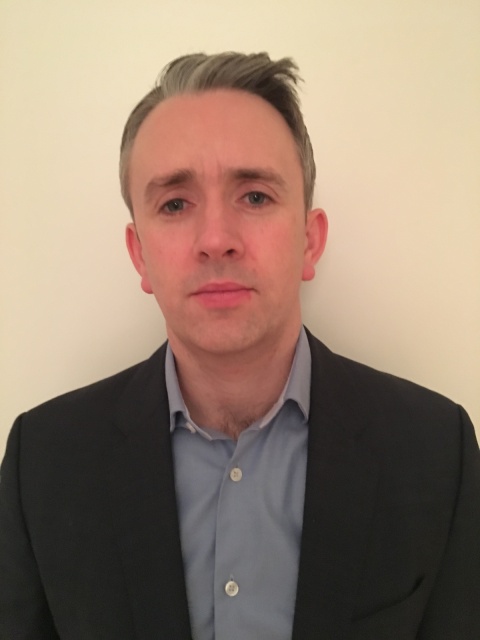Article • Radiographer & Industry
You can’t compare an apple with an orange
Usually radiographers work in a clinical environment, are specialised in CT, MR or ultrasound and take care of patients and their treatment. Not so Patrick Doherty, Siemens Healthcare Regional Business Manager, Dublin undergraduate who worked in a University Hospital for five years before switching to work within the healthcare industry.
Report: Marcel Rasch

Conclusion? ‘It’s a daily challenge,’ he confirms. In the ECR’s Rising Star Session he describes ‘Working in the industry’. Earlier, he outlined his experiences for European Hospital.
Asked why there no standardised education for radiographers in Europe, Siemens Healthcare Regional Business Manager Patrick Doherty pointed out that, for a start, countries use a different term for radiographers – e.g. radiological technicians. ‘In European countries the educational approach for radiographers and radiological technicians differ very considerably,’ he added. ‘There appears to be no established standard yet and indeed it seems to be difficult to agree on an educational standard.
‘I did my undergraduate degree in Dublin – on a four-year undergraduate degree program – the only one in Ireland for diagnostic radiography. ‘In the United Kingdom there is a three-year undergraduate program, but this can vary based on content. And in other countries, such as the USA, where they call radiological technicians MTAs, one undergoes an educational diploma in a particular area of a radiological department, for example general X-ray scanning, and this is what they do after examination, all day, every day – general X-ray scanning.
Whereas the undergraduate degree that I took was a broad-based degree, covering all the imaging modalities and topics, so that we were essentially able to go into the departments fully qualified.
What opportunities are there when working in the industry?
‘‘When I started to work in the industry, I went into direct sales, for a local Irish medical distributor, selling an array of products. That was real learning by doing and a quick immersion into the world of sales and being nimble and entrepreneurial. It broadened my perspective because it was a hard challenge for this small distributor to compete in an environment where all the big companies, like GE, Siemens, Philips and the national big players as well, are placed. For me it was a big learning curve, having gone from the clinical environment and essentially being a customer to now seeing the industrial view.
‘Back to your question: typically radiographers who work for companies such as Siemens are specialised in a certain area. When the company sells an MRI Scanner, for example, the radiologist or radiographer explains how to use it and how to interact with the system. That would be the first step of I would say 75 percent of radiographers going into industry. The advantage is that you start with a lot of the tasks you would have done in your clinical work routine. From there you can develop into different areas.’
What are the benefits of working in the industry?
‘It’s a different approach. Working in a hospital is a busy, hectic job with all the subjects you have to address from patient to paper work. Working in the industry is a different challenge. There are pros and cons in each role.
‘In the industry I miss, on one hand, the clinical interaction with patients but, on the other hand, it opened my eyes to the complexity of what the companies and the industry is trying to do for our patients to make clinical decisions faster, easier and more comprehensive. Having been on the clinical side I can appreciate quicker what already has been achieved by the industry. You cannot compare the clinical to the industrial environment. This is like comparing an apple with an orange.
‘My personal message about the advantages and disadvantages of working in the industry is a very realistic one. There exists a perception in the clinical environment that people in industry have a good life, because they may receive benefits like a company car, bonuses, and the company supports you very well. Yes, that’s right. However, the industry is, in fact, a tough environment; it’s challenging. For example you might not have to work a night on call but the working days are typically longer than those in the clinical world
‘The step to change from a clinical environment to industry should not be undertaken just because you want a company car. It sounds great to travel the world, go to conferences and events, and those are elements of the job that you can have. But, I would encourage the thinking that these are the primary benefits of working in the industry.
‘There is a high application rate of clinical based people who want to go into industry, with the majority staying in their original position for only about three years, before they either return to the clinical environment or move within the company. That’s what I have seen personally.”
Profile:
Patrick Doherty is Regional Business Manager Western Europe and Africa at the Advanced Therapies department at Siemens Healthineers in Forchheim, Germany. He gained his radiography undergraduate and master’s degrees at University of Dublin School of Medicine, Ireland
Event information:
BR 1 - The professional roles of the radiographer
Saturday, March 4, 08:30 - 10:00
Room: L 8
Session Type: E³ - Rising Stars Programme: EFRS Radiographers' Basic Session
Topics: Professional Issues, Radiographers
Moderators: H. H. Hjemly (Oslo/NO), D. Katsifarakis (Athens/GR)
04.03.2017











